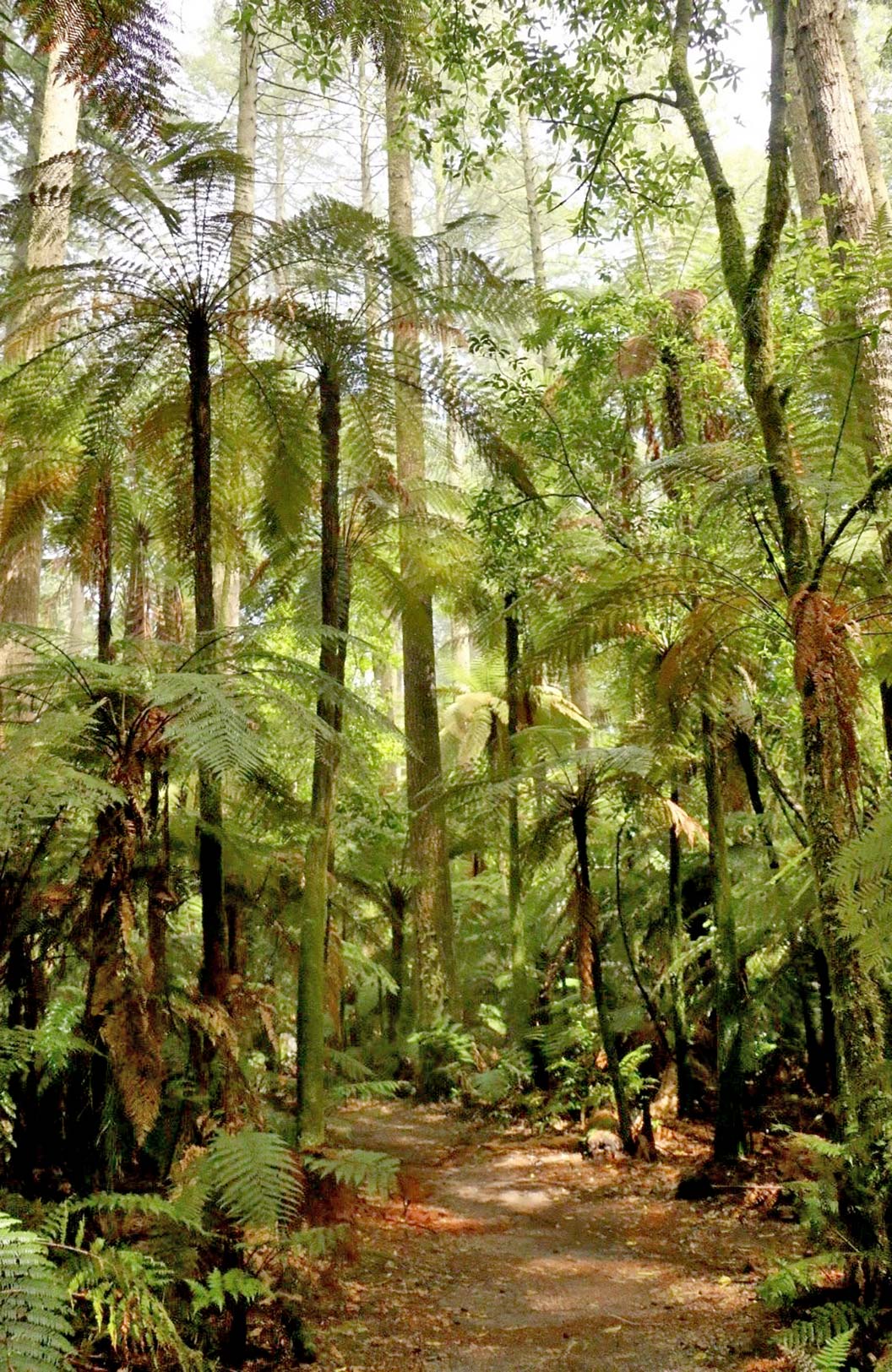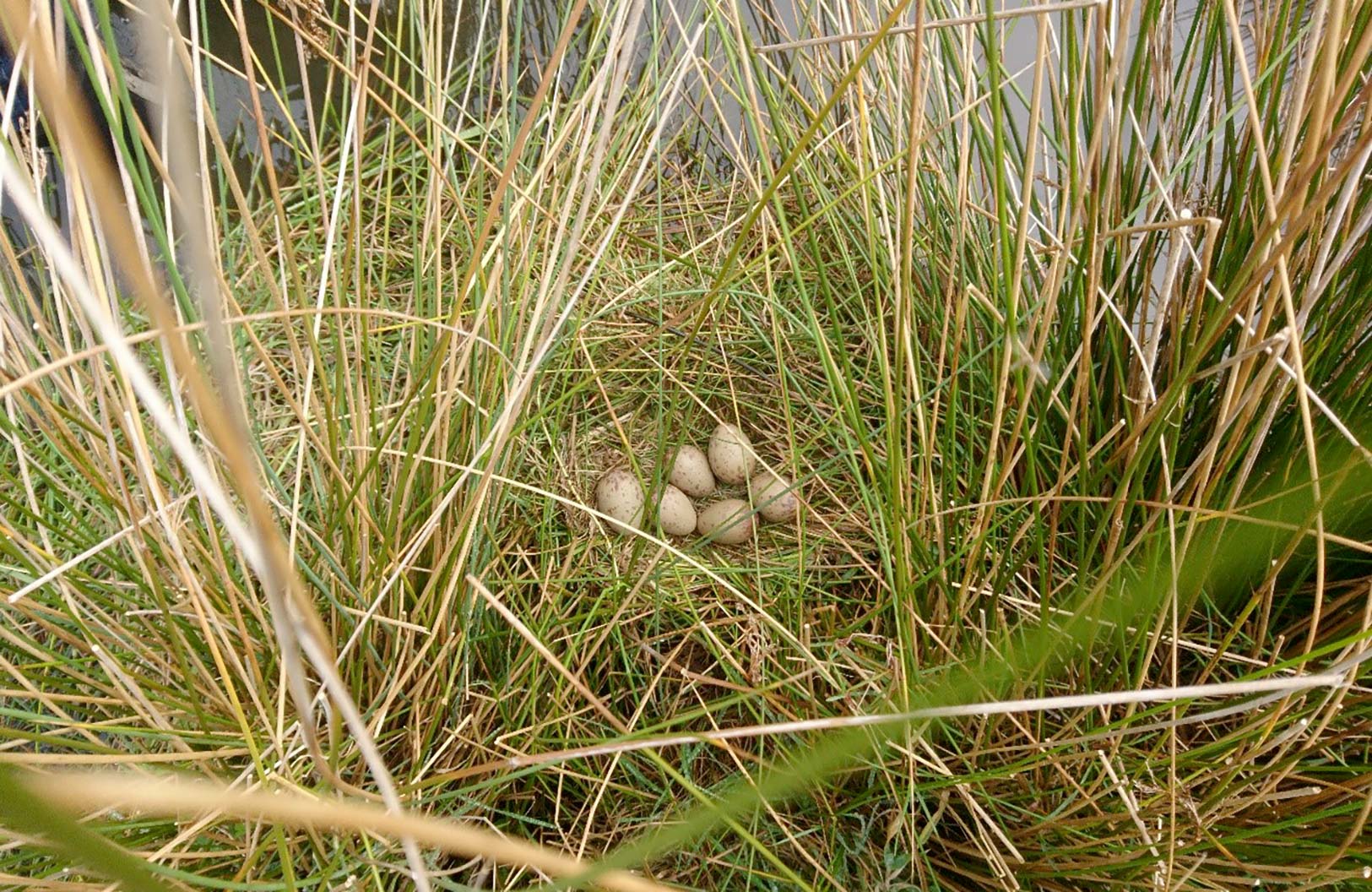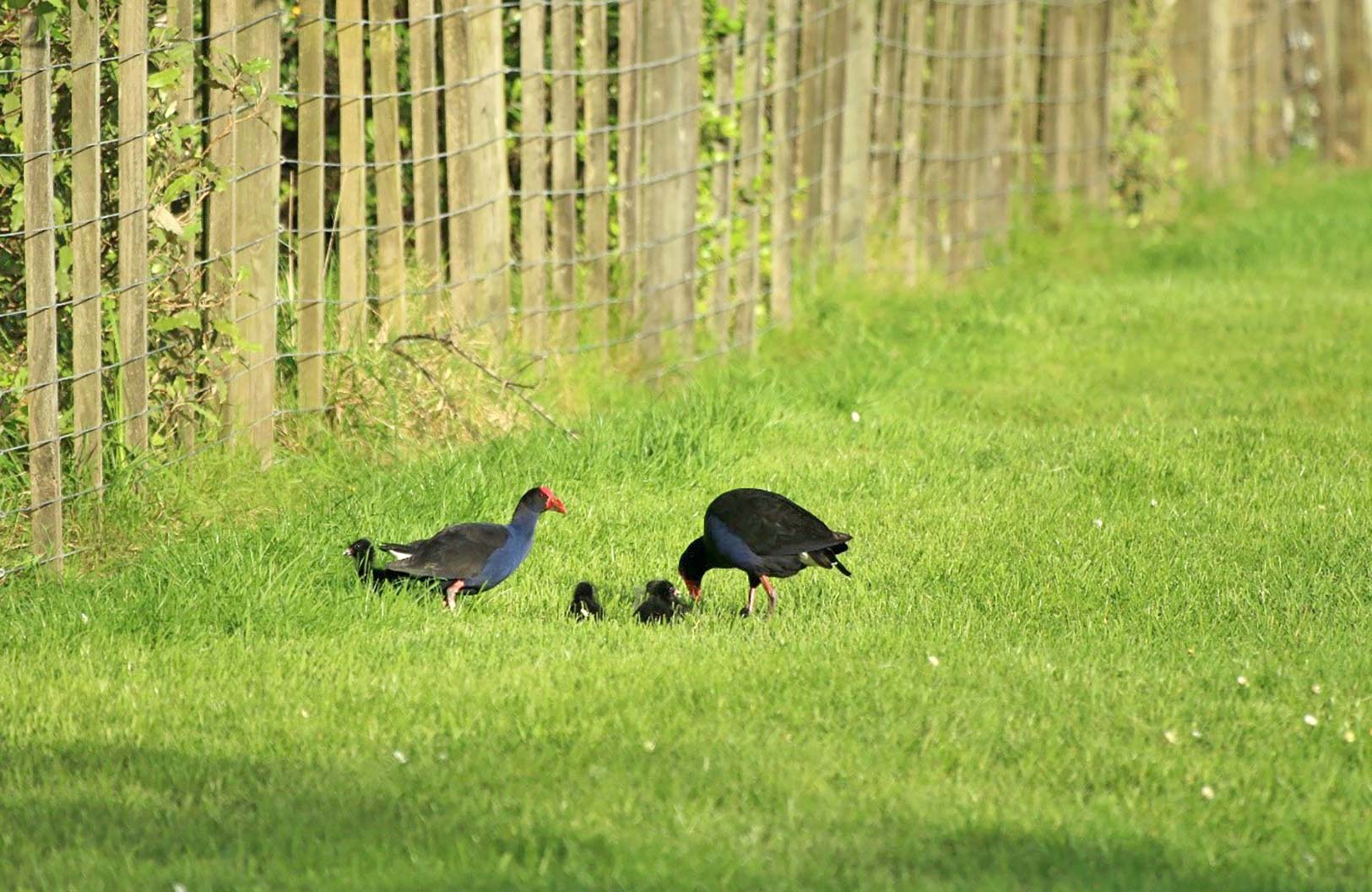How do pūkekos communicate?

Gabriella Gall
Biology
Gabriella Gall’s research is directed at understanding how individuals in groups communicate and coordinate group actions. More specifically, the biologist is interested in how the ability of an individual to coordinate effectively with others develops and what the fitness consequences of efficient communication are. She studies these questions in a range of bird species (domestic chicken and pūkeko) and is currently focusing on how experiences made within the egg affect hatching synchronization, vocal communication and post-hatching social behaviour.
In the past year, Gabriella Gall spent some months in New Zealand to investigate communication in pūkekos. We talked to her about her experiences and findings in New Zealand.
Dear Gabriella, why are pūkekos so interesting and why New Zealand?
My original plan was to work with pheasants in the UK, as these birds can be reared in the lab and then released when they are about 10 weeks old. This means that they can be manipulated and closely observed during development while in the lab, and once released we can study how they interact within a natural environment, hence allowing us to understand the fitness consequences of specific behaviours. This plan was foiled by a combination of Brexit, COVID and prevailing avian influenza within the UK. Hence, while I can use species such as domestic chicken to do controlled lab experiments, e.g. on eggs and chicks, I cannot “release” them (they would be eaten by foxes within a couple of days). I was therefore looking for an alternative species which would allow me to do manipulations easily and which I would be able to study in its natural environment. I came across multiple articles about pūkeko, Australasian swamp hen (Porphyrio melanotus), and it seemed like the perfect system. After reaching out to a couple of colleagues, I got in touch with Professor James Quinn at McMaster University, who invited me to join him at his field site in Tāwharanui Open Sanctuary, New Zealand, to collect pilot data and obtain real-life insights into the species.
The pūkeko is a very interesting species for many reasons. For instance, the birds are extremely flexible with regard to their social dynamics and mating system, and differences seem to be at least partly dependent on their local habitat and climate. They also exhibit joint nesting behaviour, meaning that multiple females can lay eggs in the same nest and these are incubated jointly by the group. In addition, the whole group helps to rear the chicks once they hatch. While they mostly do not hatch synchronously, chicks benefit from hatching early by being more dominant over their clutch mates later on, making them an interesting system for manipulations early on. Importantly, experiments and observations can be conducted fairly easily.
What were your best and what your worst experiences/discoveries in New Zealand?
New Zealand is great, and I had a lot of amazing experiences. This included great interactions with my collaborators, rangers, other inhabitants, etc., as well as getting to watch and observe pūkeko and other wildlife (e.g. kiwi, kororā, tuī, korimako, etc.), the sea, a bioluminescent lagoon, the different forests with incredible ferns, mosses and lichens, etc., each one of them amazing! We also went on a couple of day trips to see a bit of the country, and each of these was very nice! E.g. seeing kōkako as well as sea hare on Tiritiri Matangi or talking to artists at Te Puia Maori Arts & Crafts Institute in Rotorua.
The worst part, or rather a bit of a sad part, was tripping over a bird trap (which is now called the “trip-trap”) and tearing my anterior cruciate ligament, three weeks into my trip, meaning that I could not walk very well for the rest of my stay. As both field trips and any visit to New Zealand involve a lot of hiking, it was rather unfortunate.


What is special about communication in pūkeko nests?
Communication in nests is generally quite interesting, as there is a lot going on: parents communicating with each other and with their chicks as well as chicks communicating with each other. In pūkeko nests, there is even more going on, as these birds can nest jointly, and hence each member of the group may visit the nest at one time or another and there are eggs of different females vocalizing as well as chicks from previous nests being kept warm during nighttime. Very little is known about the vocal communication in pūkeko, whether in the nest or away from it. During my visit, I wanted to get a better understanding of the species and its vocalization behaviours, and hence I aimed to collect observational data in the nest at different stages of incubation and many different groups.

What are your major results?
Currently I have none. I collected 1,020 hours of vocal recordings from 19 different pūkeko nests, at different stages during incubation (early, middle, hatching) as well as from first/second nests. At the moment, I am still processing the data. This includes determining distinct sound elements and labelling these in each of the recordings. Once the recordings are labelled, I will be able to investigate how pūkeko combine different acoustic elements to various calls (they have some crazy vocalizations!) and compare this to the repertoire published by Clapperton & Jenkins, 1984. Once fully labelled, I will be able to determine the activity of birds during incubation and hatching (both adults and chicks), as well as how chicks and adults interact (vocally) in the nest before and after hatching. In addition, I have a lot of additional environmental information that I can use to help interpret the results (e.g. sheep in the paddock with the nest vs no sheep). These data are also helping me generate ideas and hypotheses for experiments and my overall research.

Can these results also tell us something about communication in other species?
Yes. The specific vocalizations used to interact are most likely different and dependent on the species studied, but the interactions themselves will be similar across similar species (given context and environment).

What have you planned next? Which research trips, etc.?
Now that I have a better understanding of the system, I would like to go back to New Zealand to conduct experiments and follow individuals over extended periods of time in order to answer my main research questions mentioned above as well as additional questions relating to the drivers of intra-species variation in social dynamics.
Thank you very much!
